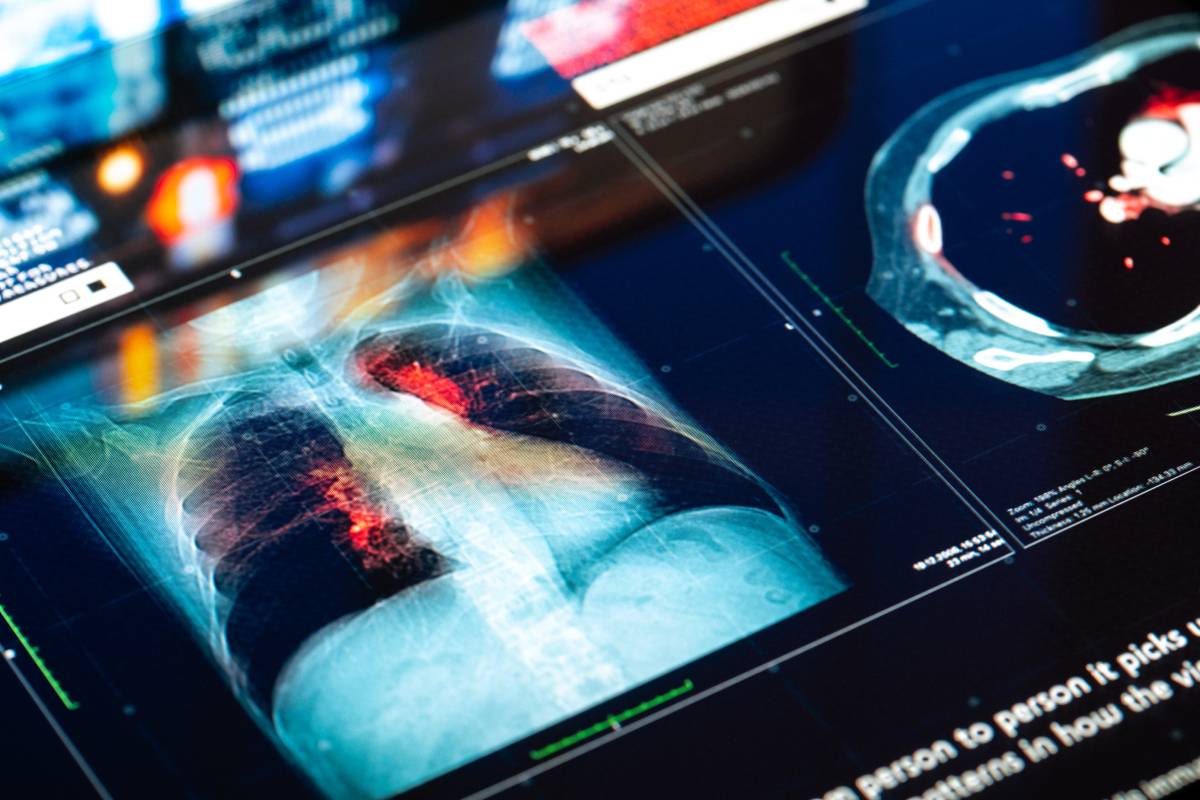Pulmonary aspiration of gastric contents is defined as the inhalation of gastric contents into the larynx and lower respiratory tract. This can cause blockage of the airways and infection and inflammation of the lungs.1 This condition is common in patients with reduced consciousness, such as through drug overdose (after which the risk for pulmonary aspiration is approximately 10%) or general anesthesia (with 10-30% of all deaths caused by anesthesia resulting from aspiration).
Aspiration can cause various syndromes that differ based on the nature of the aspirated material, quantity of the aspirated material, and the patient’s response to the aspirated material. These syndromes can include airway obstruction, lung abscess, exogenous lipoid pneumonia, and chronic interstitial fibrosis, but the three most frequently observed syndromes as a result of pulmonary aspiration of gastric contents are chemical pneumonitis, bacterial infection, and airway obstruction. Aspiration pneumonitis results in dyspnea, tachycardia, and hypoxemia and can be managed with tracheal suction and antibiotic treatment; aspiration pneumonia (bacterial infection) results in cough, fever, and purulent sputum and can be managed with antibiotics; and airway obstruction can cause acute dyspnea, cyanosis, and apnea depending on the level of obstruction and can be managed with tracheal suction and extraction of particulate matter.2
Risk factors which predispose patients to the aspiration of gastric contents include reduced consciousness (due to anesthesia or for other reasons); neurological dysphagia; disorders of the upper gastrointestinal tract; disruption of the gastro-esophageal junction due to tracheostomy, endotracheal intubation, bronchoscopy, upper endoscopy, and nasogastric feeding; extremes of age; undergoing emergency procedures; having experienced major trauma; gastrointestinal obstruction; obesity; recent oral intake; recent opioid administration; and current pregnancy.2,3 A 2021 study by Warner et al. also found through a closed claims analysis that clinical care issues could also contribute to an increased risk of the pulmonary aspiration of gastric contents, including nonplacement of a nasogastric tube before the aspiration event, poor clinical management of the aspiration event, and multiple attempts at endotracheal intubation. Although their study was not able to identify whether the use of cricoid pressure during rapid sequence induction and intubation techniques or the presence of an additional trained colleague (another anesthesia professional) while managing the airway of patients with a suspected high risk of pulmonary aspiration could help in better preventing this condition, Warner et al. did produce findings suggesting that the anesthetic management of patients who experience perioperative pulmonary aspiration was judged to be substandard. The authors stated that their findings suggest that clinical practice modifications to the assessment and anesthetic management of patients at high risk for pulmonary aspiration may lead to improvement of their perioperative and postoperative outcomes.3
References
(1) Acute aspiration of gastric contents | ADA https://ada.com/conditions/acute-aspiration-of-e-or-gastric-contents/.
(2) Froio, S.; Valenza, F. Aspiration of Gastric Contents in the Critically Ill; Oxford University Press, 2016; Vol. 1. https://doi.org/10.1093/med/9780199600830.003.0106.
(3) Warner, M. A.; Meyerhoff, K. L.; Warner, M. E.; Posner, K. L.; Stephens, L.; Domino, K. B. Pulmonary Aspiration of Gastric Contents: A Closed Claims Analysis. Anesthesiology 2021, 135 (2), 284–291. https://doi.org/10.1097/ALN.0000000000003831.
